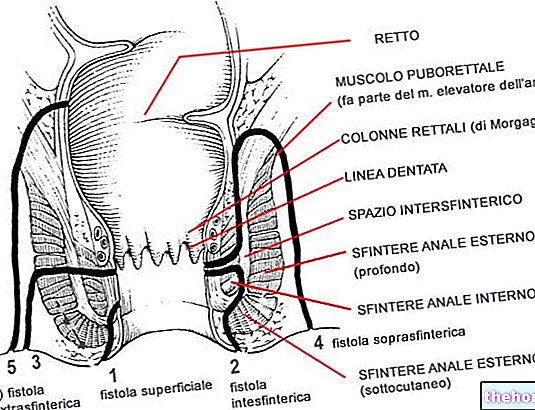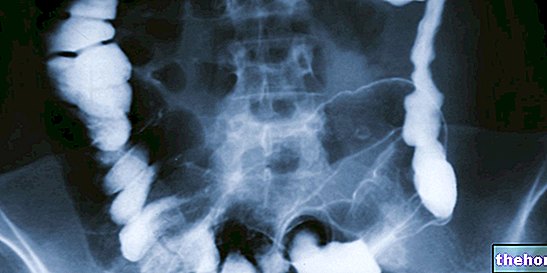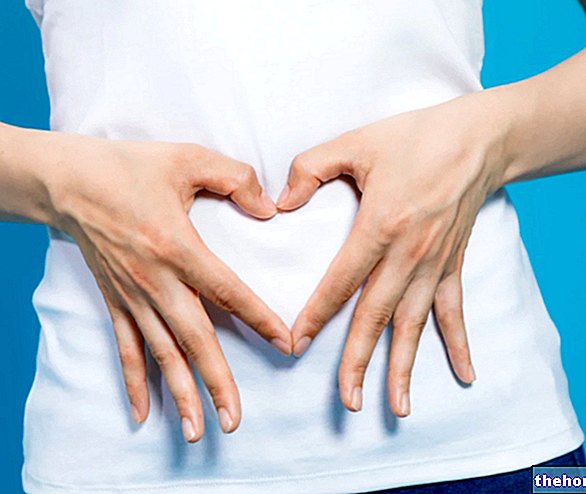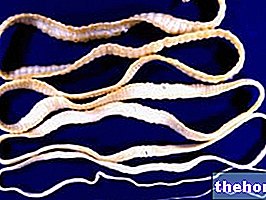Diet and diverticulitis
From the tables of the Italians, fruit and vegetables should never be lacking in abundance, regardless of the presence or absence of diverticulosis / diverticulitis.
The vegetable residues contained in the fiber tend to increase intestinal motility, regulating the consistency of the faeces and strengthening the walls of the intestine.
For this reason, those suffering from diverticulosis must pay close attention to their diet, taking the right amount of fiber every day (at least 30 grams).
In particular, in a preventive key, it seems important to consume above all insoluble fibers (cellulose, lignin and derivatives) contained in some vegetables and whole grains.. In fact, insoluble fiber absorbs large quantities of water, increasing the volume of faeces and intestinal transit; accelerating the emptying of the colon, this type of fiber helps to avoid stagnation of the stool, the accumulation of which presses on the intestinal walls, favoring the appearance of diverticula and their inflammation.
The insoluble component of the fibers, in particular cellulose, has been shown to be strongly associated with a reduction in the risk of diverticular disease; however, this relationship does not appear to be valid for cereal fiber1
However, it should be noted that both types of fiber are important for health, and it is equally advisable to include them in a diet rich in liquids. Not surprisingly, fruits and vegetables, recommended as a source of insoluble fiber for the prevention of diverticular disease1, are also carriers of the soluble fraction. On the contrary, in cereals, there is a clear prevalence of insoluble ones.
For those suffering from diverticulosis it is therefore important to associate an abundant quantity of liquids with a high intake of fiber.
The fibers prevent both the formation of diverticula and their inflammation. They are therefore useful both to prevent diverticulosis and to prevent it from turning into diverticulitis
Patients with diverticulitis, on the other hand, may have some problems taking fiber, especially in the acute phase of the disease. Inside the diverticula, especially when they are very large, small substances such as seeds contained in fruit can accumulate.
For this reason, foods such as kiwifruit, tomato and watermelon could cause problems in case of recurrent diverticulitis.Furthermore, diverticular disease, by altering the motility and functionality of the whole intestine, predisposes the subject to a greater risk of food intolerances.
Unfortunately, there are no magical foods or supplements that can reverse the structural changes of the enteric walls; this means that once formed, the diverticula cannot regress as a result of the diet.
As for meat, it has been found that a high consumption of red meat is associated with the onset of symptomatic diverticulosis. Not surprisingly, the incidence of the condition is significantly lower in vegetarians. Obesity also seems to favor the onset of diverticular disease.
Many people, often prompted by misleading advice or advertising, tend to take lactic ferments to regulate their intestinal function. In reality, in those suffering from diverticular disease, lactic ferments could even complicate the bacterial contamination syndrome and have the opposite effect to what was hoped for. These products, if taken in excess, could further strengthen the bacterial flora of the colon favoring its ascent into the small intestine and the appearance of bloating, flatulence, diarrhea and constipation.
SPORT
Movement and physical activity help keep abdominal wall muscles toned, improving colonic motility and reducing stool stagnation in diverticula.
Both in the case of simple diverticulosis and in the presence of inflamed diverticula it is important to correct smoking risk factors, excess alcohol, fats and simple carbohydrates.
Food Advice
Dietary advice in case of diverticulosis
Dietary advice in case of diverticulitis
Prefer foods rich in fiber, accompanying them to an "abundant intake of liquids (still water).
If necessary, supplement your diet with fiber-based dietary supplements (psyllium, bran ...), but avoid the use of laxatives.
Consume a "hearty breakfast".
Increase physical movement (jogging, brisk walking, exercise bike, etc.).
Abolish spices, spicy foods (pepper, chilli, curry, nutmeg), alcohol, beverages, sodas, tea (decaffeinated is allowed), coffee (decaffeinated is allowed) and chocolate.
Reduce or even eliminate the consumption of milk; on the other hand, moderate quantities of yoghurt and dairy products are tolerated (except spicy cheeses).
Avoid oilseeds, legumes, whole grains and more generally meteorising foods (champagne, sparkling water, whipped cream, mayonnaise ...).
Consume fruit without peel and centrifuged (but not blended, to prevent the food from incorporating excessive quantities of air).
Avoid all vegetables
Care and treatment
For further information: Drugs for the treatment of Diverticulitis
Since diverticulosis, per se, is not a disease, the only useful recommendation in these cases is the adoption of a lifestyle.
In the presence of diverticular disease, on the other hand, a series of medical treatments combined with compliance with the dietary rules seen above are necessary.
In the prophylaxis of diverticulitis (to prevent new episodes) non-absorbable antibiotic therapy is mainly used. These drugs travel throughout the intestine, exerting their beneficial effects without being absorbed by the body.
In the acute phase of the disease, on the other hand, systemic antibiotic therapy is necessary. In fact, this therapy must also act externally in order to fight inflammation of the external intestinal wall (peridiverticulitis). Systemic antibiotics, being absorbed by the body, however, have side effects such as the "alteration of the" good "bacterial flora. and the loss of efficacy in case of repeated administration.
Attention to the use of painkillers in case of acute diverticulitis: the reduced perception of pain could in fact delay the diagnosis of peritonitis subjecting the patient to extremely serious risks.
Only 10-15% of advanced diverticulitis require surgery.
Glossary
DIVERTICLES: herniation of mucosa and submucosa through the muscular wall, usually located near the "tapeworms", where the rectus vessels penetrate the colic wall, weakening it. Colonic diverticula are caused by a lifelong defect in the muscle wall of the colon that becomes thin and extroverted at the point where the nerve endings and small arteries that carry blood to the mucosa enter through the colon.
DIVERTICULOSIS: asymptomatic presence of diverticula
DIVERTICULAR DISEASE (symptomatic expression of diverticulosis) is a pathology characterized by the presence of extroversions, generally of the saccular type, of the mucosa and muscolaris mucosae through the circular muscular tunic and which do not exceed the serosa (diverticula). It is generally localized at the level of the sigma and then extends to the descendant and the transverse without, however, ever involving the rectum.
DIVERTICULITIS: (uncomplicated, complicated) is the inflammation of the diverticulum and its collar
BIBLIOGRAPHY
1) Aldoori W, Ryan-Harshman M Preventing diverticular disease. Review of recent evidence on high-fiber diets - Can Fam Physician. 2002 Oct; 48: 1632-7.).
2) Talbot JM. Role of dietary fiber in diverticular disease and colon cancer. Fed Proc. 1981 Jul; 40: 2337-42.
Other articles on "Diverticulosis and Diverticulitis: Diet and Treatment"
- Diverticulosis, diverticulitis
- Diverticulitis diverticulosis diverticula
- Diverticulitis - Drugs for the treatment of Diverticulitis




























